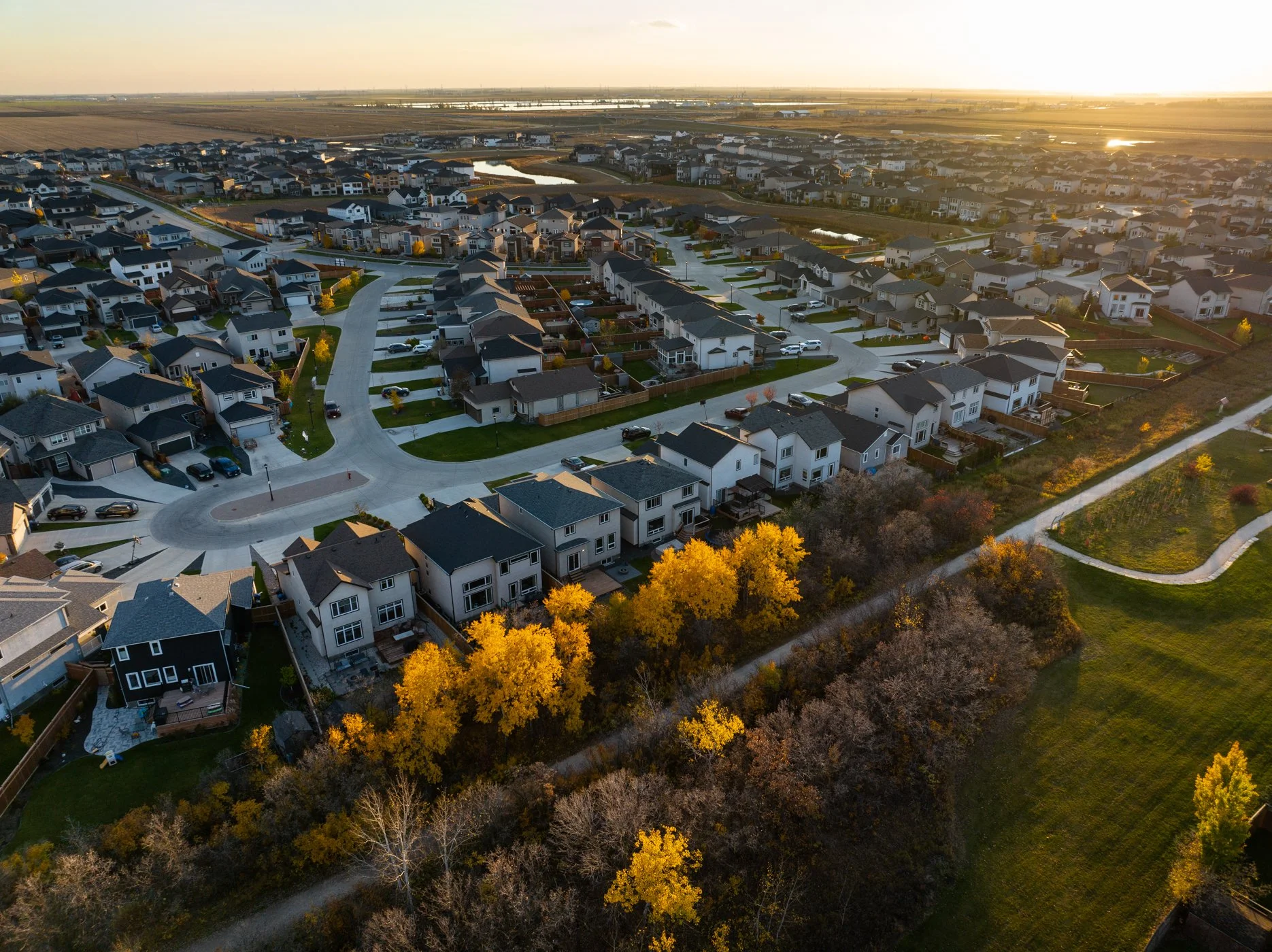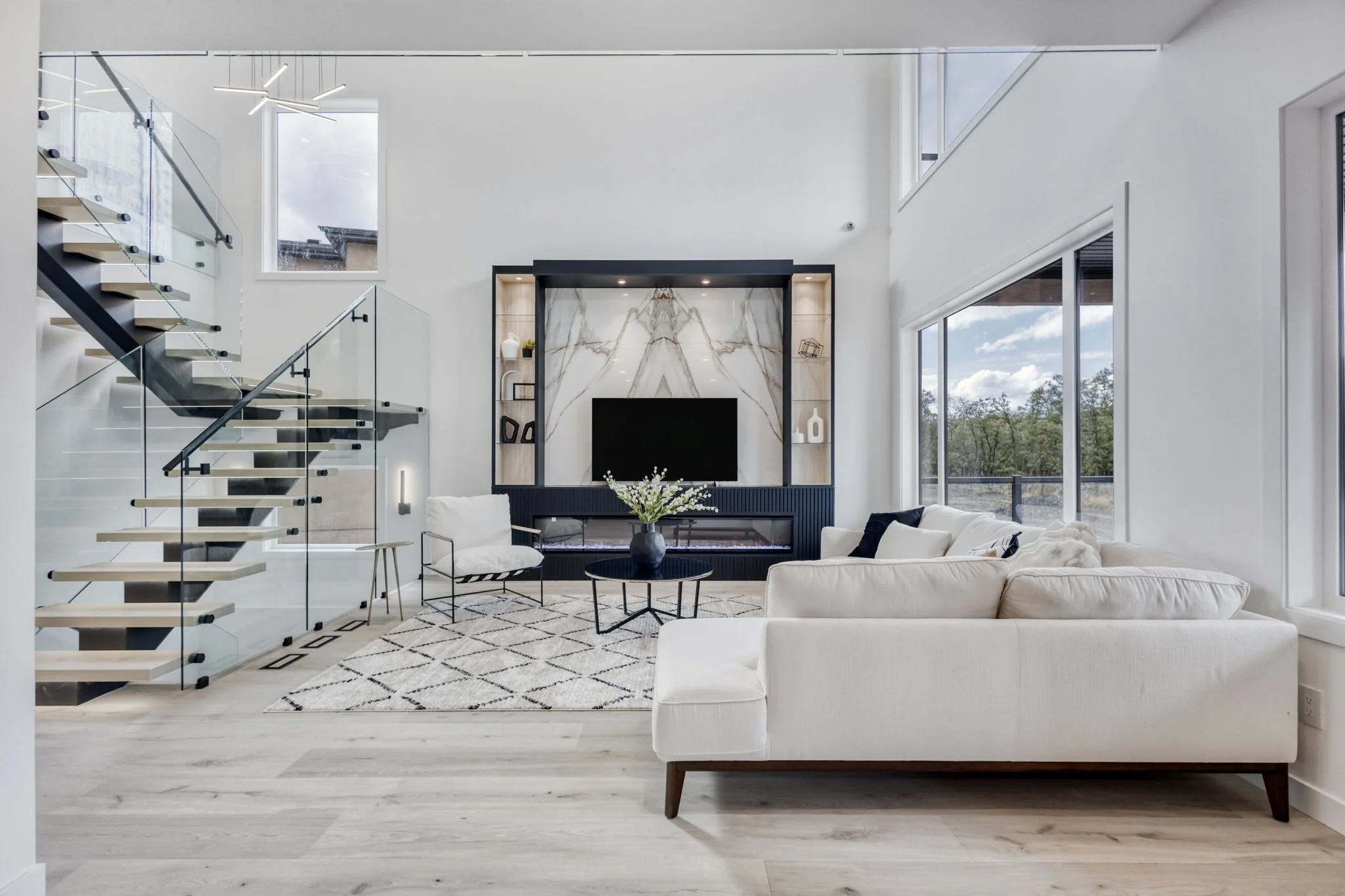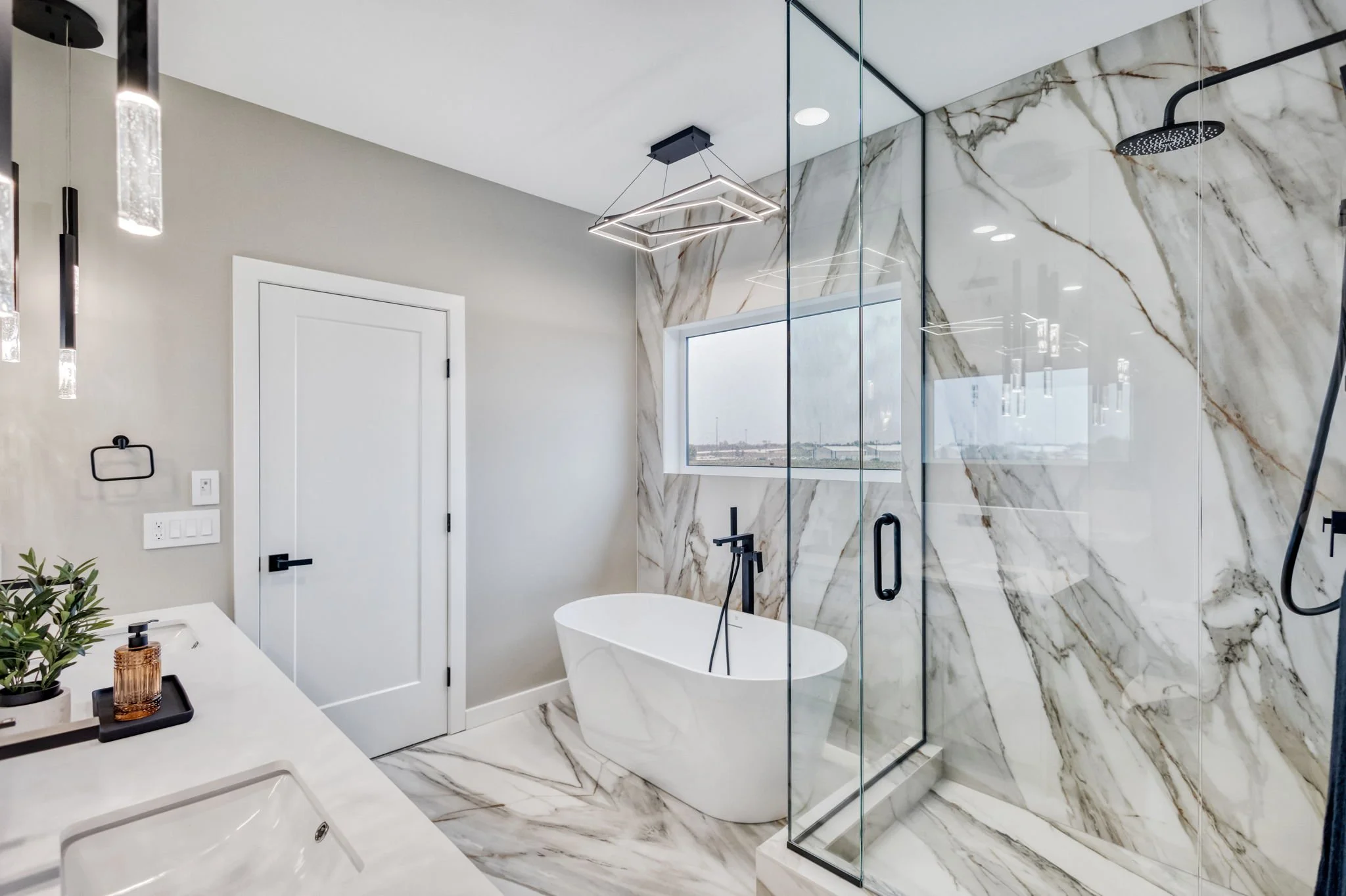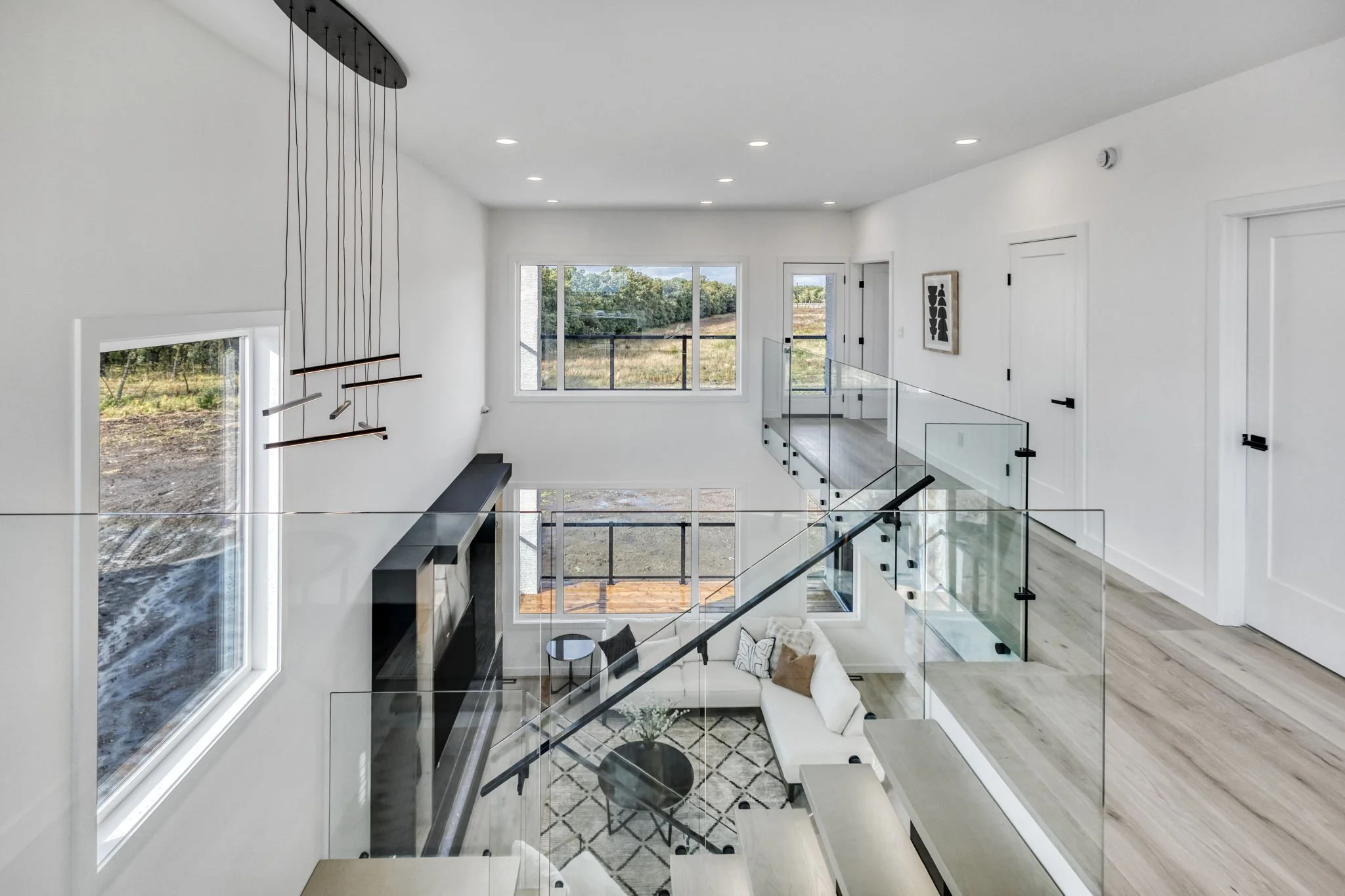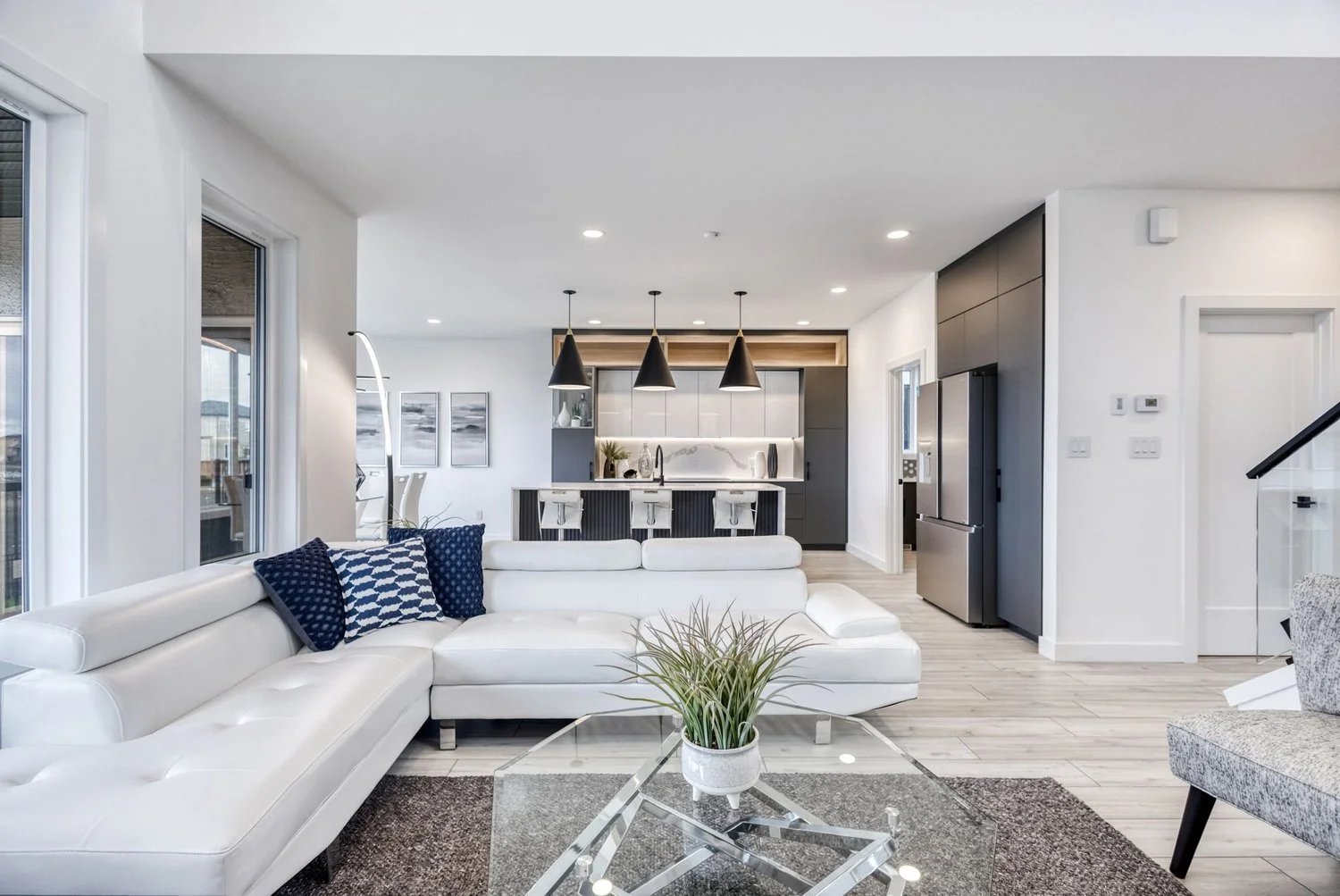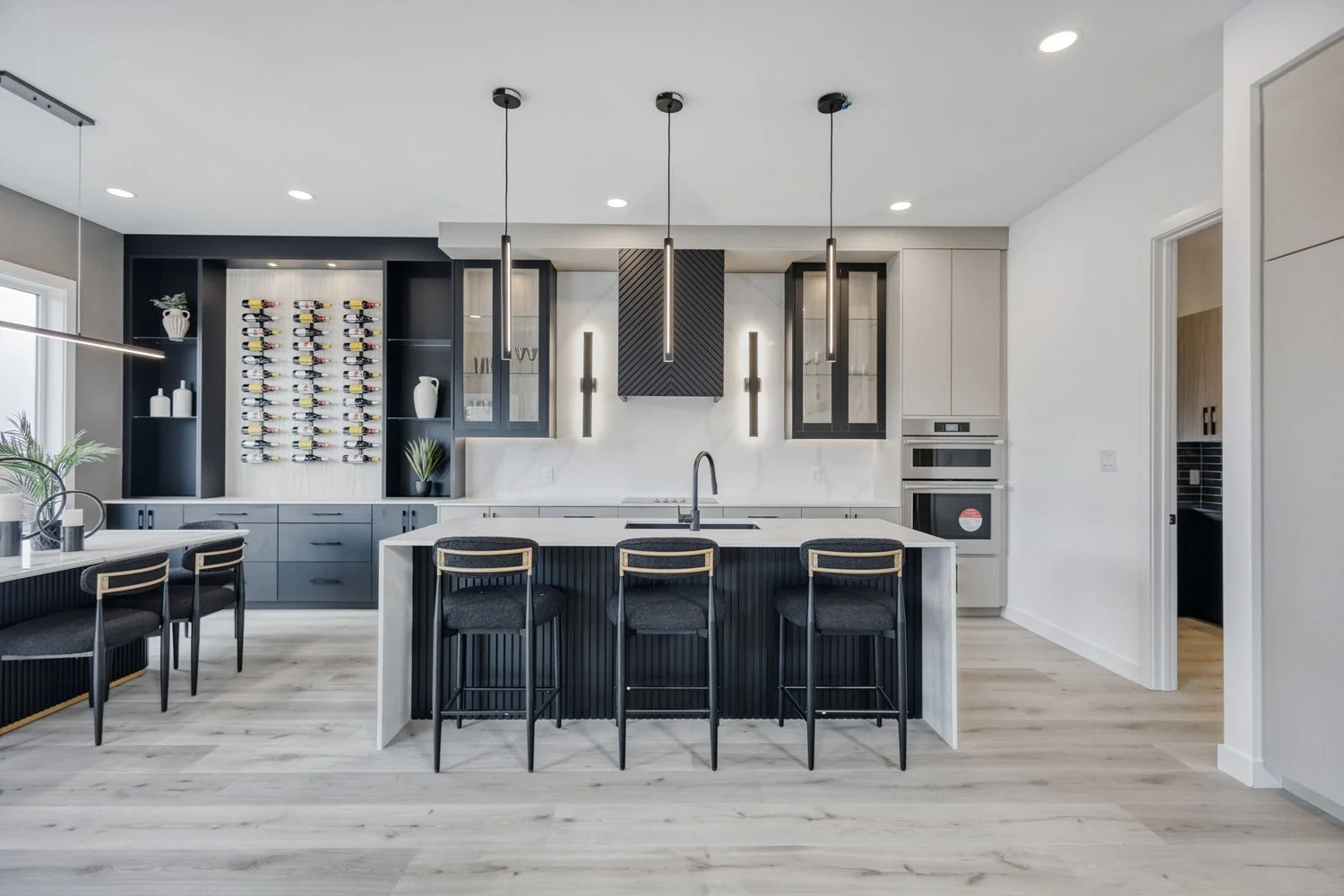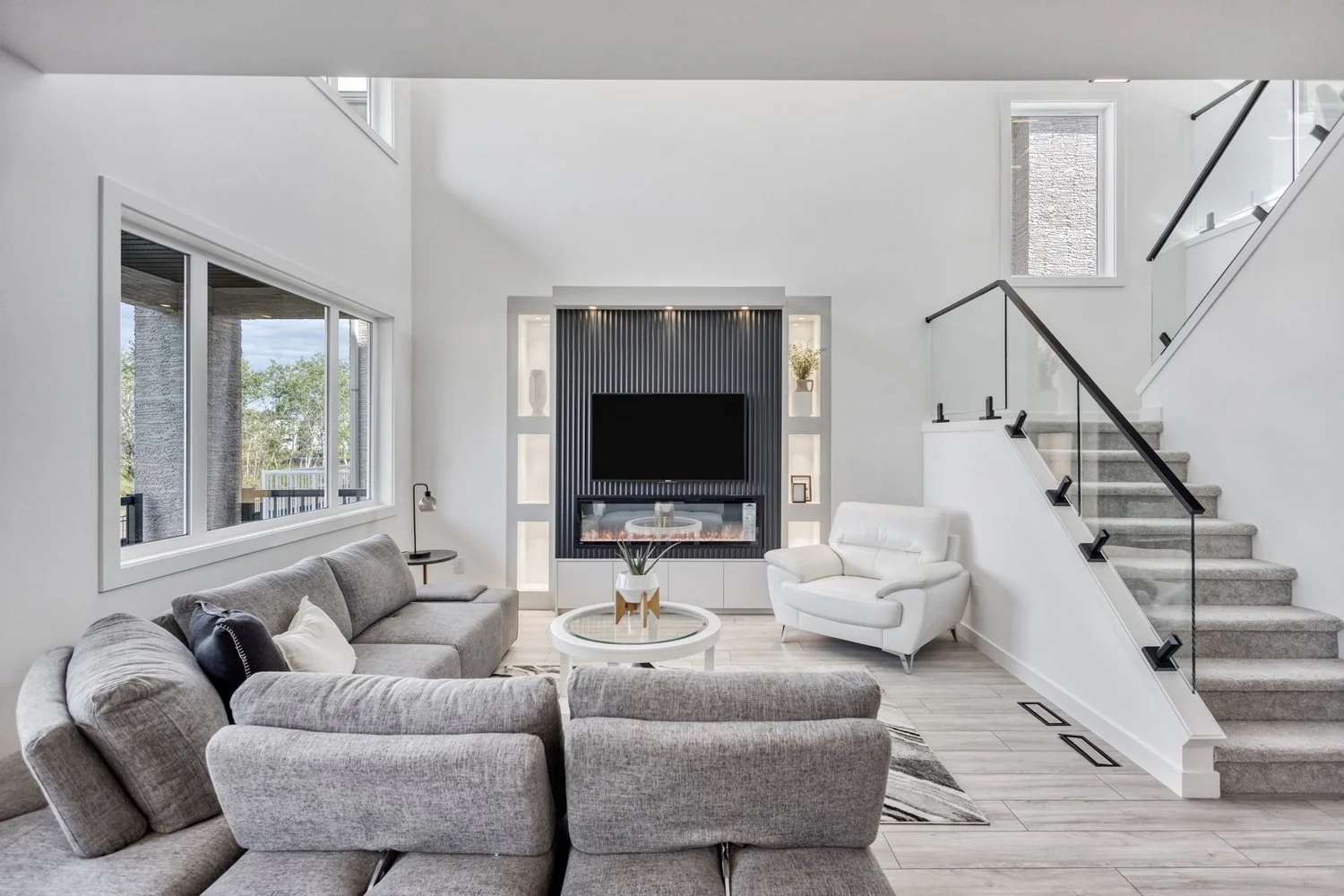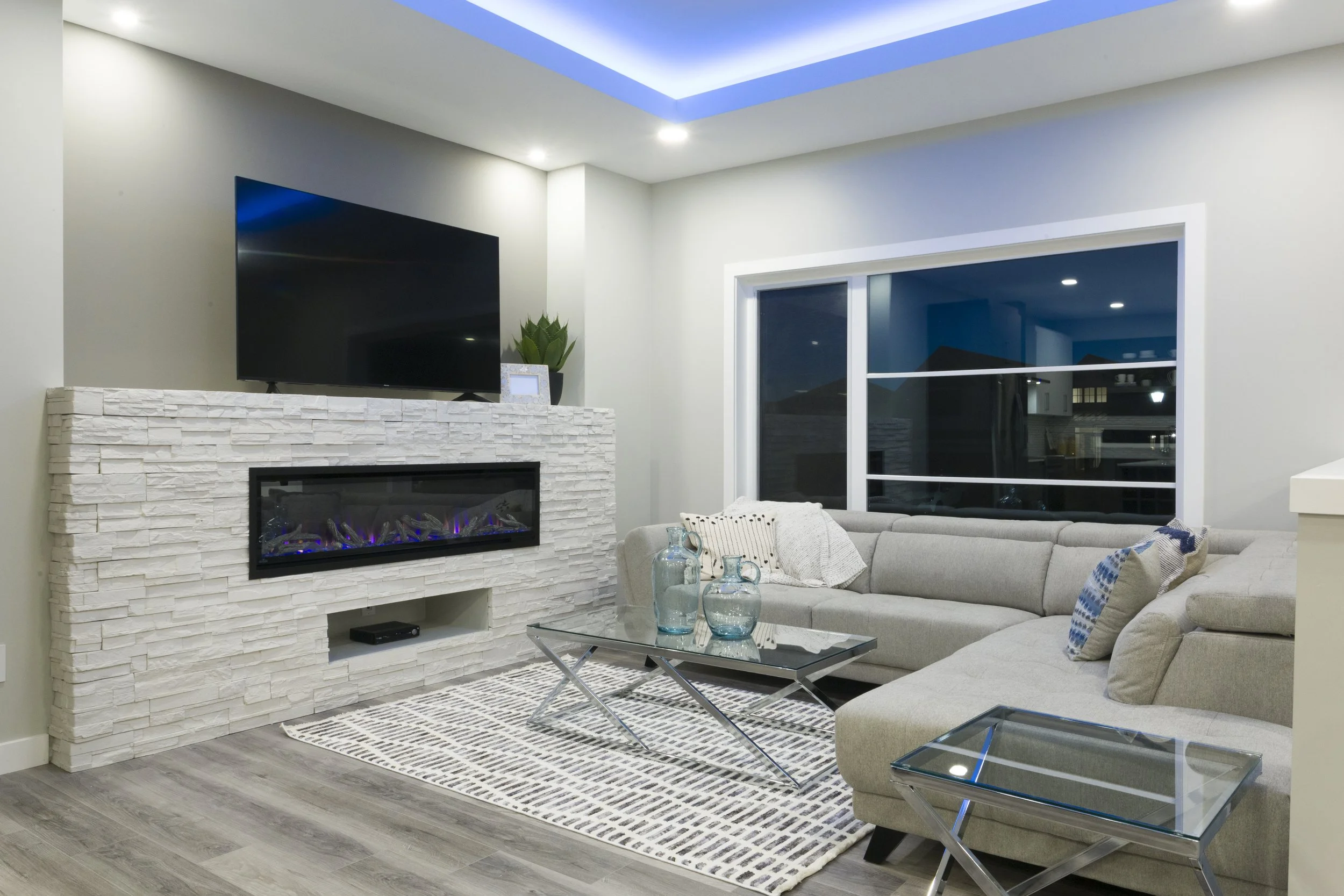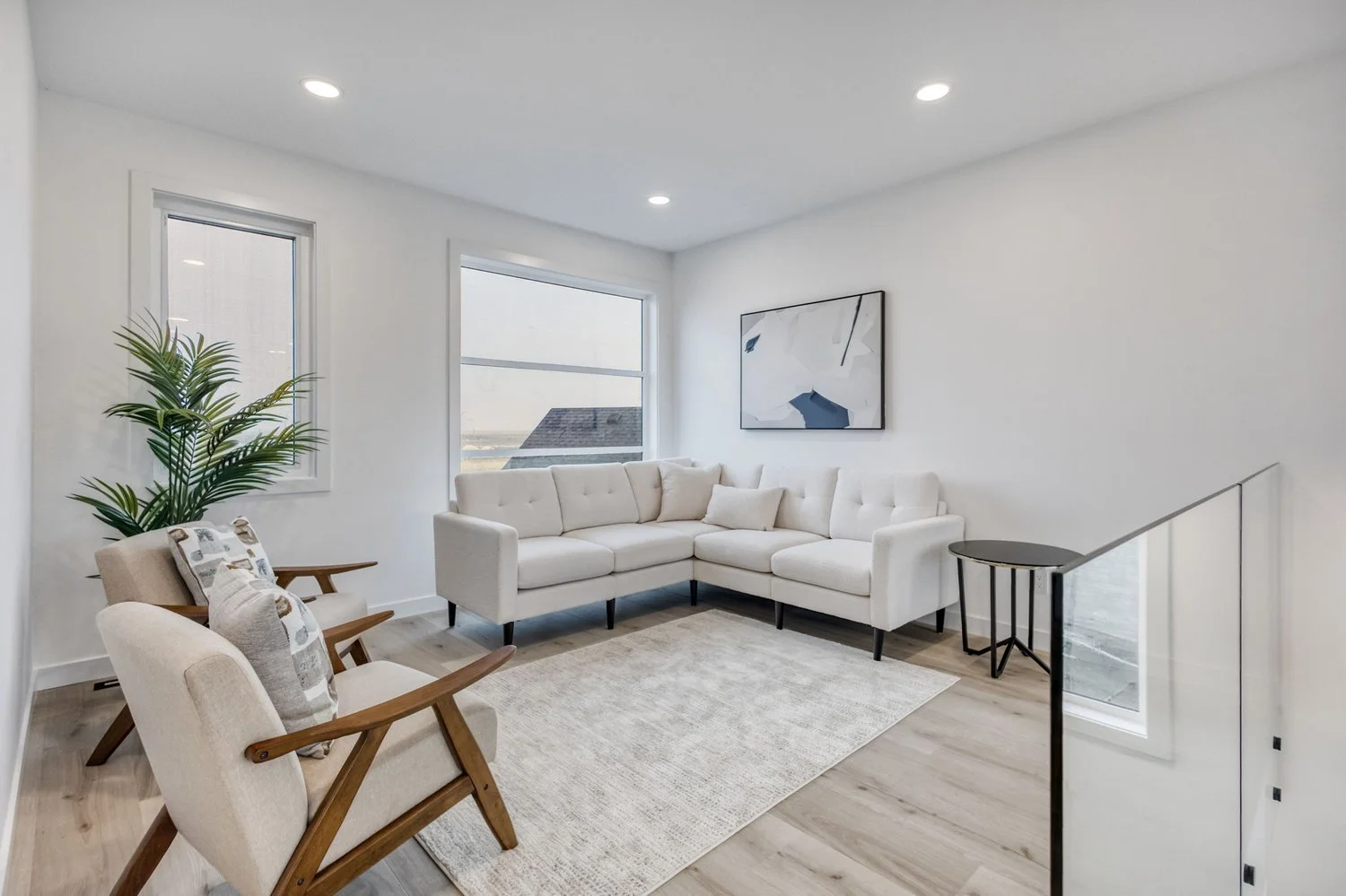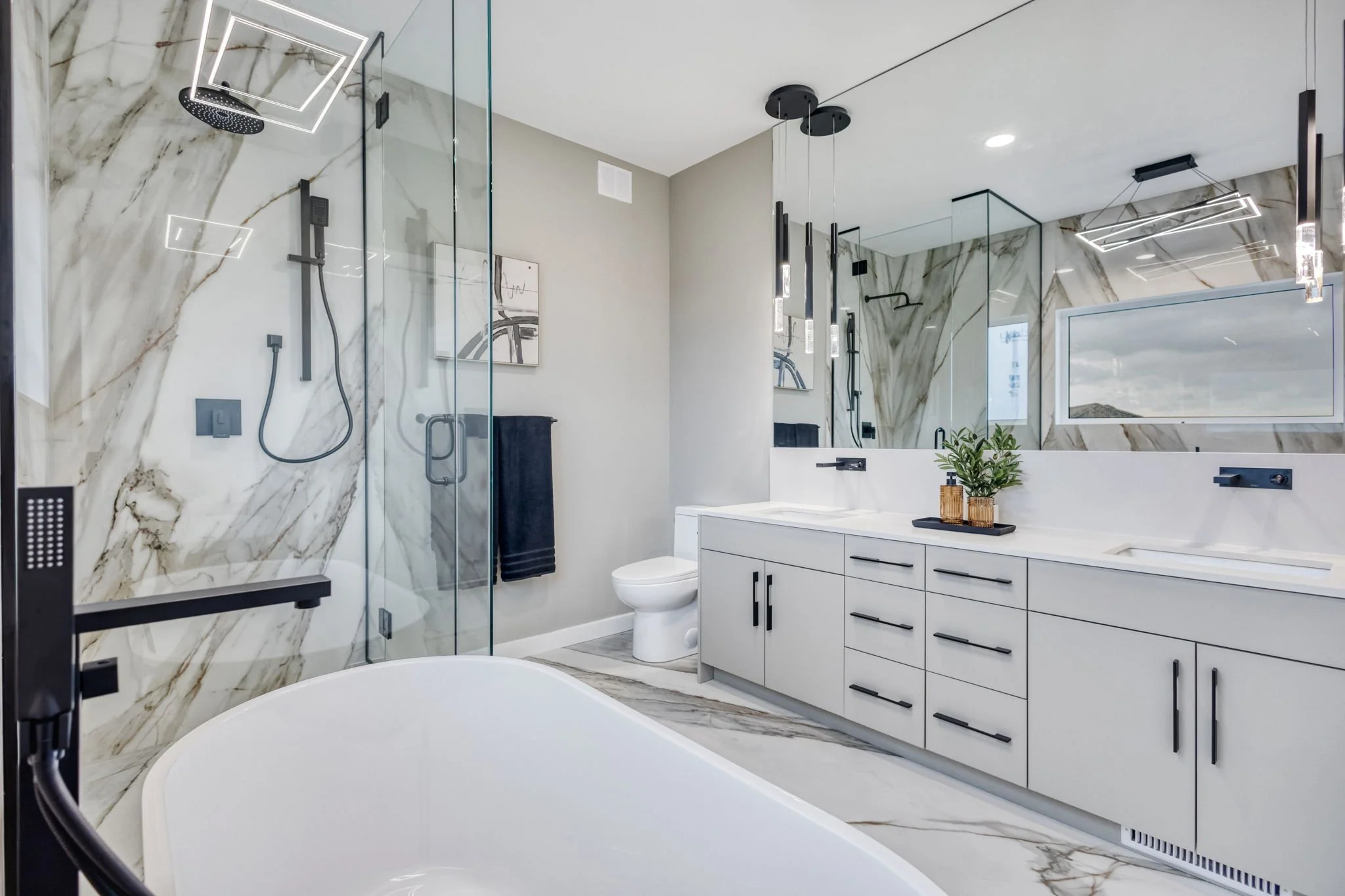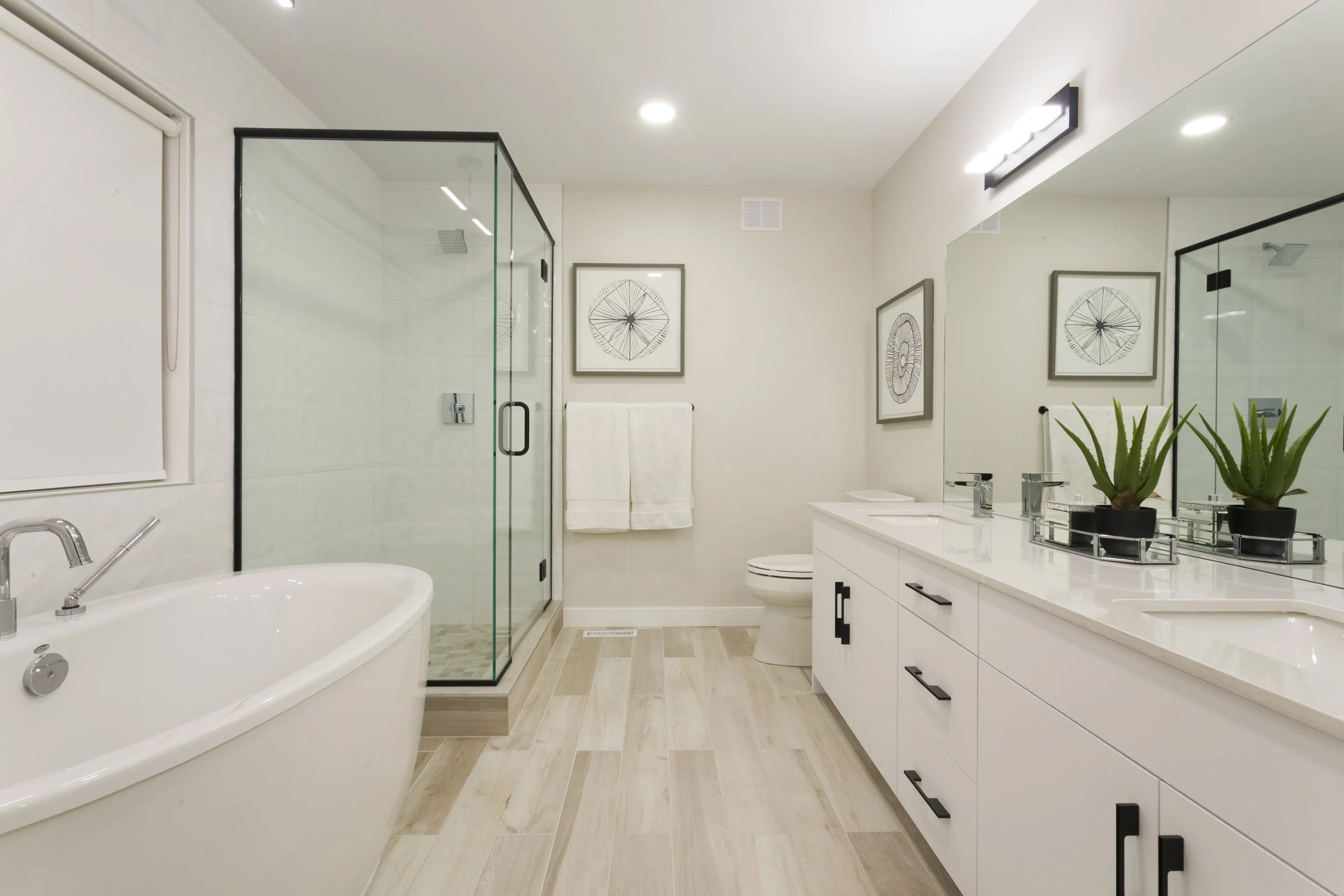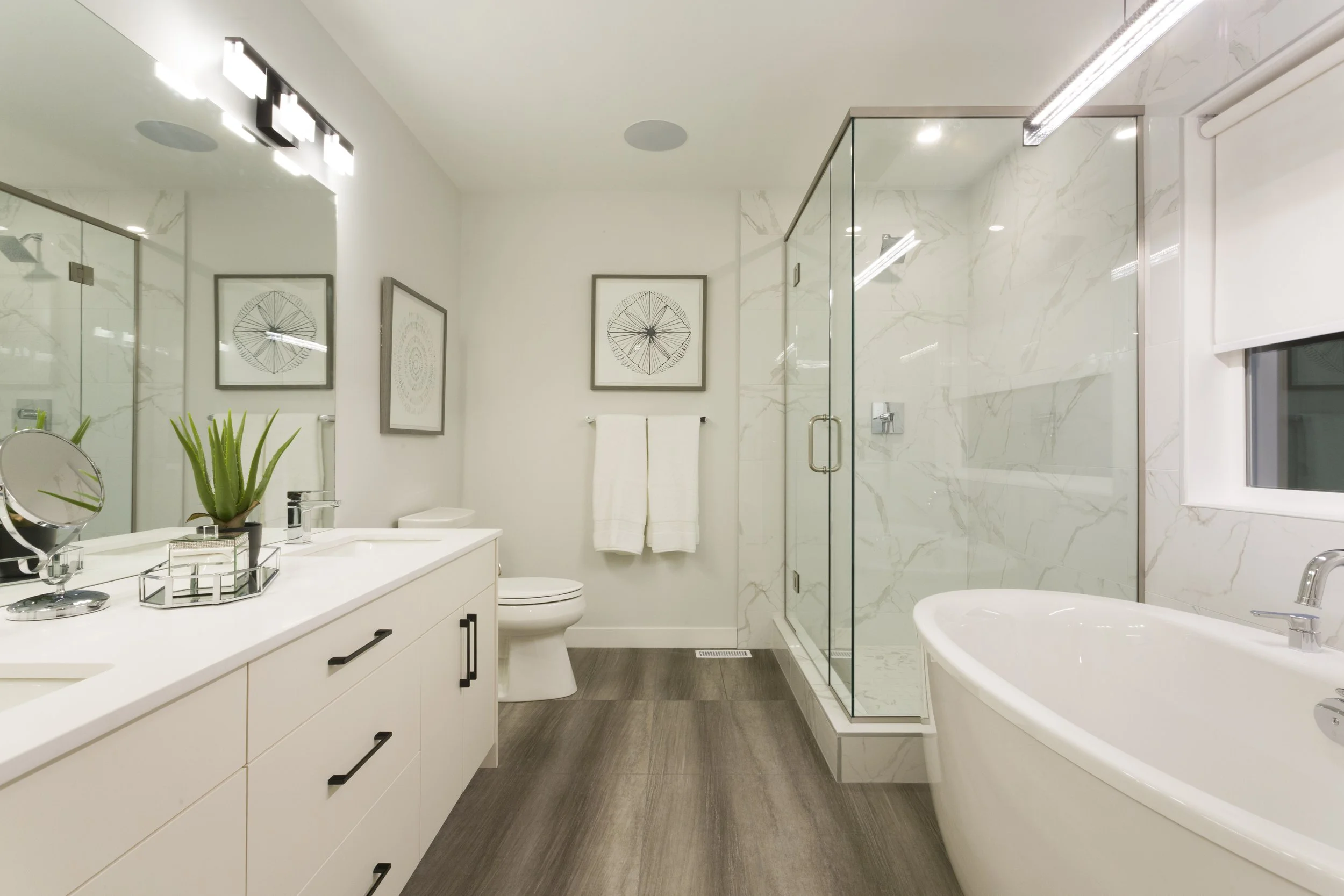Discovery Homes Ltd is a premiere home builder located in Winnipeg, Manitoba
We are currently building homes in Forest Grove Estates, Highland Pointe, Prairie Pointe, River Springs Grove and St Adolphe.
The Discovery Advantage
Discovery Homes Ltd. offers a client-centred experience to deliver a home tailored to your family’s unique needs and preferences.
Discovery has won multiple Gold, Silver, and Bronze Awards from the Manitoba Home Builders Association, and we are proud to have been repeatedly recognized for its creativity, quality, and functionality in home design.
PEACE OF MINDFrom the beginning of the sales and planning process to the end of the construction when you are living in your home, there is always someone available to talk to you about your investment.
We want you to be able to see the construction process and explain to you the different stages of construction so you will know what is behind the walls of your home.
You will know that your home is built using up-to-date construction methods and quality materials. You will know that your investment comes with a warranty backed by a company who cares.
FINEST QUALITYWe use nothing but the best construction techniques and building materials in all our homes.
FUTURE FORWARDWith a future lower level in mind, selecting the location of your basement windows and rough in plumbing are part of the drawing process.
Higher than average 8 ½’ lower level ceiling height and I-joists reduce the number of bulkheads and beams in the lower level ceiling to keep future development flexible. Optional steel beams in the lower level reduce the number of teleposts needed and keep the lower level area open. Three large opening windows to provide abundant natural light and to accommodate drywall deliveries for future lower level development.
CUSTOMIZED HOMEAdd your personal touch by customizing your floor plan to suit your needs and preferences.
BEAUTIFUL FINISHESYou will be guided through our selection process by our selections coordinator and design consultant.
We have a large assortment of interior door styles for you to choose from and custom cabinets for your kitchen and vanities, including crown moulding and a wide range of handles and knobs.
You will have the choice of various 4″ baseboards and matching casings with a smooth white lacquer finish, as well as a variety of carpet and vinyl selections for you to choose from, and tile in select models. Choose Kohler sinks, toilets, and faucets, and a stunning lighting package including dining room chandelier.
Portfolio
We take pride in every home we build. Please explore our portfolio of some of the exceptional homes that reflect our commitment to quality and design.
What do I need to know about building a home?
Our team of experienced REALTORS® has written the following collection of blog posts to guide you through the building process. You can also read our FAQ for more info.
-
Building a home from scratch can be one of the most stressful but also one of the most rewarding things you can do. This isn’t something that very many people have the privilege of doing, and many people are curious about what the process looks like from start-to-finish.
Keep in mind that there are many different builders and each one has different timelines and different ways to get to the finished product.
This is a step-by-step description of the process of building a new home in Winnipeg, Manitoba with Discovery Homes, a custom builder that I have represented through hundreds of builds, but the process may not be exactly the same with other builders.
What are the steps of building a house in winnipeg?
The first meeting is usually at a showhome which may or may not be the same as the plan that you are considering building. Here, you notice the finishing work, the quality, and the upgrades. It’s very important to understand what is standard and what is an upgrade. For example, a fireplace can run anywhere from $2000 to well over $20,000 and you need to know which one you’re looking at when you’re exploring the show home and starting to envision what your home will look like.
The next steps are to determine the lot, plan and approximate price. Your budget will determine the size and location of the lot, and the size of the plan. The size of the lot will determine the options for the plan.
Once the lot and plan have been picked it’s time to decide what may be the most important for you to add into your custom build. Will you be here for 3-5 years or is this the final house you will build?
If it’s going to be a short-term home for you, then it’s very important to balance your preferences with the potential resale value. You might think that having the laundry in the kitchen is a great idea—but 99% of buyers will disagree with you! In that case, best to place the laundry where most people want it.
If this is going to be your ‘forever’ home, then it’s very important to add the balcony, the spice kitchen or the built-in fireplace because these are not easy to do once the house is built.
Things like stone countertops and durable flooring add the most value immediately and for the long run. Adding a deck, custom tiling or a backsplash can be done later or even done by yourself if you are so inclined. Builders will not usually include appliances or an air conditioner, but sometimes one or the other can be negotiated.
Once the upgrades have been agreed-upon, and the customizations settled, you are ready to move to the next stage.
The builder will apply for the permits and then you move to the fun part-- the selections stage. This is when you will choose the colors, the cabinetry, countertops and all the way down to hinge colour on the doors. Most builders provide a designer to assist with this process. While some people love it, many find it stressful and having a professional to assist means that you’ll be happy with the results.
How long does it take to build a house in winnipeg?
Once this has been completed then you wait a little while for your first walkthrough, which is an electrical walkthrough. This is where we plan things like placement of televisions, appliances, and lighting, meaning that you will need to have planned your furniture placement prior to this walkthrough.
The builder carries on with the build, and your tasks are to purchase your appliances, AC, and make a plan for your landscaping. You can hire a company to handle the landscaping, but laying sod, or even growing grass from seed are both fairly simple, and lots of people do it themselves. Of course, the timing for the landscaping depends on your possession date. If you move into the home in January, obviously you will have to wait until spring to complete it. Some exterior finishes (including the stucco) also cannot be completed in the winter, so if you take possession in the winter, the builder will return once the weather allows to complete the final touches.
Closer to possession you will have second walkthrough with the builder, to create a list of the final touch-ups required before possession date. This is so exciting as you can see your vision coming to life! You will also have a firm possession date now, so your next task is to set up movers, and book TV/phone/internet installation. You will also want to call the City of Winnipeg and order your garbage and recycling cans ahead of time, as they can take a couple of weeks to arrive.
Finally, possession day comes. Landscaping won’t be complete, so you’ll have mud in the front and back. Like any home, take meter readings for hydro, gas and water, and then call to set up new accounts. Then move in, unpack, sit back, and enjoy!
If you have any questions about building a home in Winnipeg, feel free to call me anytime at 204-799-3951.
You can also check out our current listings of to be built homes by Discovery Homes Ltd.
-
With a resale house what you see is what you get. It can be hard to visualize the layout or style of a home when all you have are drawings on paper, and some buyers really prefer to know exactly how everything looks, feels and functions from the beginning. You also will have your pick of neighbourhoods as there are definitely more choices for resale homes in Winnipeg than new homes. The price tag is also the price tag; most resale homes come with appliances, grass, decks and air conditioners, so there there aren’t usually additional out-of pocket expenses required on day 1. The downside is that there can also be hidden problems that sometimes even the best home inspector cannot find and without a warranty on resale homes, once you own it, it becomes your problem.
New builds offer a home warranty, plus new construction materials, techniques, and technology— and of course if the home is built by a reputable builder you won’t need to worry about the quality of what you have purchased. You are able to pick and choose the layout and style choices that suit you. But a big downside for many people is the waiting time from contract to possession, and living in a developing neighbourhood is a pro for some people but a con for others.
How long does it take to build a home in Winnipeg?
This question varies from builder to builder, and the easiest way to sum things up would be to say it’s anywhere from a year to over two years. Pandemics aside, the real reason the build time varies is how the builder will go about building the home.
Some bigger builders will take two years because instead of building your home immediately after the permits have been granted they will start multiple homes at the same time, foundations first, and then the rest of the stages would follow along concurrently. This is an important question to ask when signing the contract, as your motivations and timeline may differ from the builder’s.
Ask out if your builder will start the build immediately after the permits are granted as well as how many other homes they plan to start at the same time.
What does it cost to build new in Winnipeg?
The per square foot cost, which varies from about $250/sqft to well over $500/sqft depending on the builder and the finishes. To build an entry level double attached garage two-storey home in a newer neighbourhood, you can expect pricing to start around $530,000 for 1600-1700 sqft and go up from there. Don’t forget about extras such as higher quality finishing work, appliances or air conditioning which can drive up the cost.
In general, construction costs have fallen a bit from the pricing we saw in 2022 as pricing for materials has stabilized. This doesn’t mean they will not rise again, so it is very important to make sure the contract you sign does not have an escalation clause that allows the builder to further raise the price after the contract is closed. Feel free to reach out to us for clarification on this particular point.
At The Moore Group we are very knowledgeable about all things real estate, but especially new homes. Call me for information, I am happy to help!
-
We often get questions about the pros & cons of older homes compared with new builds— but the answer always depends on the person asking the question— as well as the evolving supply and demand of real estate and construction costs.
The first factor in determining the whether a new build or a resale home is best for you has to do with your personal situation. How long you are planning to stay in the property? Will it fit your needs down the line with a growing family? What is important to you about a community? What is important to you about a home? These are the questions that will help contextualize the information below.
What are the pros of building a home in a new area?
Building a home in a new area is great because all the roads, infrastructure and houses are modern and brand new. Your home is also brand new and exactly to your taste. New homes offer mandatory warranties which gives the buyer peace of mind on top of the fact that their house has never been lived in.
The cost to get into a brand-new community is usually lower than it will be in a few years once the community is complete and the property values start to rise as the area becomes more desirable.
In a new community, everyone is new and people tend to be very friendly and eager to create relationships and build community, so it can be easier to get to know your neighbours and make friends.
What are the downsides of building a home and living in a new community?
On the flip side, the trees and green spaces are all brand new as well, and will take many years to mature and create a canopy for shade. In your own backyard you will also have to complete the landscaping, fencing, and also deal with a considerable amount of noise and dirt while the area builds up around you. The infrastructure will likely not be fully completed right away either— schools and community centres are the last to come and can take many years of waiting.
When it comes to a new home there are additional costs above construction costs that will require upfront cash that you might not need in a resale home— don’t forget to factor in the costs for AC, blinds, appliances, decks and landscaping.
Another point that isn’t necessarily a downside, but is something to consider, is that the timeline for completion of a new home is usually 10-12 months, whereas the usual timeline to possession for a resale home is 2-3 months.
What are the advantages of buying an existing home in a mature area?
Resale houses are all about the maturity of the area and the immediate amenities. Schools, parks, churches and community centres are all built, and you know exactly what they offer in terms of location, hours, and services. Generally mature areas are built closer to downtown, meaning a shorter commute to and from work, and easier access to restaurants and entertainment.
Often when you buy a resale house you will receive many gifts from the previous owners in the form of finished basements, landscaping, fences, appliances, and maybe even a pool (which can climb to over 100k if you wanted to put in your own). The cost of these features is included in the purchase price and generally valued at much less than it would cost you to purchase them in today’s dollars.
Many people are also passionate about the character features of a home or neighbourhood. There is a finite supply of character homes— so they can be good investments as maintaining and upgrading them will usually result in good returns!
What are the cons of buying a resale home?
The downsides of buying an existing home can be the age and condition of things like the roof, the windows, the furnace, and other high-cost items. If you can find out who the original builder was it will also add some comfort in knowing that it was a quality build, and having a qualified home inspector look at the home will give you important assessment of the maintenance of the home by the previous owners.
The last downside is tricky— because for some it’s actually an upside! With resale homes, you get what you get. Some people prefer this compared with the uncertainty of what the finished product will be in a new build, but it also means that if the ceiling height is 8’, or if the kitchen is closed concept, or the bedroom window faces directly into the neighbours’ bedroom window, that’s the way its going to stay. Customizing a resale home is going to come at much greater expense and inconvenience than customizing a new build.
What should I do next?
If you’re leaning towards building a home, please explore our website to learn about the cost of building a home, and check out Discovery Homes Ltd and some of the design options available to be built.
If you’re leaning towards buying an existing home, we have lots of information about the buying process and be sure to check out what’s for sale now.
The best thing to do is to contact us to set up a discussion with a realtor, to factor in both potential routes, new and used, and then determine what will make the most sense for you and your family.
-
Yes, you should absolutely buy a show home! I’ve bought two of them myself for my personal homes and I think they are a great deal. Here’s why:
Suppliers provide materials and appliances at a discount for show homes. They do this because they know that potential clients can see and feel the materials in a show home, they are more likely to choose them for their build, meaning that the supplier will get more sales. Show homes routinely include tens of thousands of dollars in discounts, so they are a great deal compared with building from scratch.
The land was purchased a few years ago by the builder at the start of the build, which probably took about a year, then the home was used as a show home for probably another year or two. When you buy a show home in 2025, you’re buying the land in 2022 dollars, so additional savings there.
It’s the best of both worlds. Getting to walk through the layout, feel the materials, and see the exact view means you know exactly what you’re getting in the same way you do when you buy a resale home. But you’re also getting a brand new, never-lived in home, with a warranty, the way you do when you build. It’s a win-win.
-
Selecting the right lot is one of the most important decisions you can make when building your home and it is something that is often overlooked until it comes time to sell.
When it comes time to list your home, you get a valuation of your house and of recent sales in the area. The house across the street recently sold for more than yours is going to be listed. Both houses are similar in size, style, age, and even finishing work, yet your neighbour’s house is apparently worth $75,000 more. What’s the problem?
At the outset, when the area was under-development and all we could see is a patch of dirt, your neighbour decided to spend the extra $20,000 to take a lot that backed onto the greenspace and the lot you picked either has neighbours at the back or maybe a busy roadway. This drastically changes the market value once the house is put on the re-sale market.
It is important to pay attention to the site map when you’re building, it will show important information like which ways the sun will rise and set, green spaces in the areas, lakes, and more.
Did you want to put a pool in one day? Do you like to sit in the backyard and barbeque in the sun? If so, then you had better pay attention to where the sun will be in your yard for the back half of the day.
Are there walking paths nearby? How about parks and greenspace? It’s all on the site map.
I can help you identify the advantages of different lots and what will get you the most money when it comes time to sell. Give us a call at 204-799-3951 and I can walk you through the process.
-
Building a home from scratch is your chance to put your personal style and creativity into it, but it’s a good idea to keep in mind what the next buyer might want if you end up deciding to sell. While custom finishes are exciting, some choices might be harder to undo or replace, which could affect the resale value of your home.
For example, paint can be freshened up and cabinets can be refaced but a unique type of stone countertops would need to be torn out and replaced if it isn’t to a buyer’s taste – an expensive change that not everyone wants to make when buying.
Similarly, hardwood floors might look beautiful at first, but when the light hits them at the right (or wrong) spot, all you will see are the dents, dings, and scratches from regular use. It is also important to remember that your home might not always look like a show home, sure, there’s a lot of traffic in them but kids and pets will always quickly change the look of things.
Think about glass panels in your home, they look beautiful and open up the space but a buyer with three small kids might not see the same value in them. They’ll likely imagine the consistent cleaning of fingerprints.
This isn’t to say that you shouldn’t not do what you like, it is your home at the end of the day. But, if you’re thinking of selling within five to ten years, you want to select upgrades and finishes that will get you the highest return on your investment.
We specialize in helping people decide which improvements will provide the biggest returns, give us a call at 204-799-3951 and let’s answer any questions you may have!
-
Often misunderstood, an escalation clause can come in many forms:
New Home Construction: This clause usually comes into play with new home construction because it is an intricate process with many moving parts from contract time until possession. The most common ones involve either time spent, cost increases, or sometimes both depending on the current climate in the market.
An example of an escalation clause seen regularly on contracts is one where the builder has completed the offer and conditions have been closed, but for an extended period of time they cannot get in touch with the client to begin the design process and the selections for finishing work.
This is rarely activated because it the most exciting part of the process for the buyer, but sometimes things happen that draw out the process. The past few years have seen unheard of rate hikes from the Bank of Canada which puts everyone in a bind, even the builders who already pay a larger interest rate than the consumers. In this case, it is in their best interests to move forward quickly with the build to mitigate the extra costs applied due to the higher rates as well as volatile material pricing.
After Closing: The second escalation clause reared its ugly head a few years ago in the direct aftermath of the pandemic. This one ended up costing everyone a frightening amount after the contract was closed and the house was built, culminating in surprise bills up to 50,000 dollars or more in some cases, out of pocket, before the keys can change hands.
This happened as the rising costs of fuel and transport bled into the supply chain which was already weaking due to rising costs and the sudden closing of many businesses, before the much-maligned decision to raise the interest rates to make things even worse. Since then, the costs have stabilized and many builders have stopped using this extra escalation to help balance out the volatile costs, but some still do.
This clause was an extra form applied to the new home contracts which was easy to spot, however there are usually a few buried in the standard offer to purchase used in the new home industry. This is where the lawyer approval condition holds its weight, have your lawyer comb through every line to see what other costs may come your way after the conditions have been satisfied, and if possible, have them cross out the ones that you deem unworthy to the process. A little research ahead of time for things like this will for sure save some stress headaches down the line if you are hit with a big bill that you were not prepared for.
As always, feel free to reach out to us for any clarification and guidance through this process!
-
Landscaping is one of the most tricky items to budget for—on the one hand, the sky is the limit as you can be as creative as you want— but on the other hand, if you do it all yourself, it can be pretty budget-friendly. With such a broad range of ways to get it done, it can be difficult to know what to budget.
Generally, you should budget about 1-2% of the home’s total price (land + build) for landscaping. So on a $600k build, you would budget $6000-$12,000; on a million dollar build, you would budget $10,000-$20,000. However, keep in mind the following considerations:
The higher the price point, the more you should lean to the higher end of the estimate, or more. In a luxury home, you won’t be happy with the home if there’s no wow factor outside.
Don’t spend less than 1%. Or if you do, you should have a phased plan that you can build on when you have more cash. Your home’s curb appeal and your enjoyment of your property are both really important and a big part of that is the landscaping.
This estimate is based on typical new developments. If you’re building outside of a new development, double your estimate for each acre of property. You can easily spend at least $50,000 landscaping a 5 acre lot, and that would really be the bare minimum. Best to get a couple of actual quotes for unique properties like this.
Does this estimate include deck, fencing?
The budget for decks and fences are in addition to the landscaping budget. If you’re having to make difficult budgeting choices, then my advice is to build the largest deck you can right off the bat, and finish the landscaping the following year. Adding on to a deck later is tough, and you can still enjoy a deck before the landscaping is complete (although probably not quite as much). There’s nothing wrong with doing it in phases.
Are there deadlines for when I have to complete my landscaping in Winnipeg?
There are rules about how much time you have to complete your landscaping—so definitely check the guidelines for your particular development (we have some of them linked further below). Generally, you will have one year from either home occupancy or final grading to complete the front landscaping, but no deadline for the back yard. But check your specific guidelines to be sure in your area.
How can I save money on landscaping?
Saving money on landscaping can either come from who does the work—you can save a lot of money if you do some or all of the work yourself. Learning how to lay sod or plant a tree is easy thanks to youtube and jobs like placing landscaping rock is just sheer grunt work and can be done by anyone with a shovel, wheelbarrow, and will to put in some sweat equity. However, there still may be some jobs that you’ll want help with—designing the landscaping plan is an important one and if your plan includes large rocks or boulders or creating berms, you’ll need heavy equipment and someone to operate it.
Working with a budget can also mean doing the landscaping in phases, which is really common. You can do your front yard the first year, and the back yard the following year, or you can do grass the first year and then add in trees, and plants the following year. However, remember that every year you delay planting is a missed year of growth, so another strategy is to plant all the trees and shrubs the first year, and then finish up the grass on year two.
I’m only building this house for me, why would I care what’s expected?
Finishing your landscaping is an important part of keeping up your property value as well as being a good neighbour. When weeds grow wild in an unfinished backyard, their seeds blow into neighbouring yards, which creates tension between neighbours. Also most people don’t like to look out their window at unfinished yards, so it’s a low-level irritant to neighbours as well. Most people in new neighbourhoods understand that it can take a year or two to get everything completed, but once you’re pushing into year 3 or 4 without landscaping, neighbours do start to get annoyed. Lastly, its also an important part of resale on your home. Lots of unplanned moves come up for people for all kinds of different reasons and having the landscaping done will improve your resale value.
Am I responsible for maintaining my boulevard in Winnipeg?
You are! Section 86 of the City of Winnipeg’s Livability By-Law says that it is up to you to maintain the area of the boulevard that is adjacent to your property, which includes keeping grass and plants trimmed (although not trees) and keeping it free of garbage.
What are the landscaping guidelines for Prairie Pointe?
You can find them here, but essentially sod is preferred and must be laid over 4 inches of topsoil. Decorative stone is not preferred but is allowed provided the size is between ¾” and 1 ½” and landscaping fabric is recommended under the stone to act as a weed barrier. Paving stones are not preferred but also allowed, however they must be installed by a professional. Shrubs are not allowed on the city-owned boulevard or within the first 5.25 meters from the curb on your front yard (also city-owned property). In Prairie Pointe, you have one year from date of possession to complete the front yard landscaping.
Prairie Pointe Landscaping Requirements
What are the landscaping guidelines for Highland Pointe?
Highland Pointe is also developed by Ladco; the landscaping guidelines are the same for both Prairie Pointe and Highland Pointe. Sod is preferred and must be laid over 4 inches of topsoil. Decorative stone is not preferred but is allowed provided the size is between ¾” and 1 ½” and landscaping fabric is recommended under the stone to act as a weed barrier. Paving stones are not preferred but also allowed, however they must be installed by a professional. Shrubs are not allowed on the city-owned boulevard or within the first 5.25 meters from the curb on your front yard (also city-owned property). Find the actual guideline here.
Highland Pointe Landscaping Requirements
In Highland Pointe, you have one year from date of possession to complete the front yard landscaping.
What are the landscaping guidelines in River Springs Grove?
In River Springs Grove, front yards, exposed side yards and back yards that back onto active transportation paths must be sodded within 2 years of the beginning of construction. Front yards are to be mostly sod, with a minimum of 15% planted beds (shrubs, perennials or ground covers). Landscaping stone is permitted between driveways. Back yards are to be mostly sod and a minimum of 10% planted beds. The RM of West St Paul requires homeowners to maintain all landscaped areas adjacent to their lot.
River Springs Grove Development Guidelines
What are the landscaping guidelines in Forest Grove Estates?
In Forest Grove Estates, front yards, exposed side yards and back yards that back onto the retention ponds must be sodded within 2 years of the beginning of construction. Front yards are to be mostly sod, and must be enhanced with trees shrubs and beds, including a minimum of 15% planted beds (shrubs, perennials or ground covers). Landscaping stone is permitted between driveways. Back yards are to be mostly sod and a minimum of 10% planted beds. Homeowners must also maintain landscaped areas adjacent to their lot.
Forest Grove Estates Development Guidelines
What are the landscaping guidelines in Bridgwater?
In Bridgwater, you have one year from date of occupancy to complete your front yard landscaping. At least 50% of the front yard must have sod, at least 15% of the front yard must have planted beds (shrubs, perennials, ground covers). Rock beds are permitted but do not count towards the 15% of planted beds, and the first 1.5 meters from the cub must be grass only. Planting trees is strongly encouraged. Side and rear yards must be majority sod, with a minimum of 10% planted beds.
Bridgwater Lakes Development Guidelines
Bridgwater Trails Development Guidelines
**Please double check directly with your builder or the developer before making your landscaping plan to be sure these guidelines are still current.

